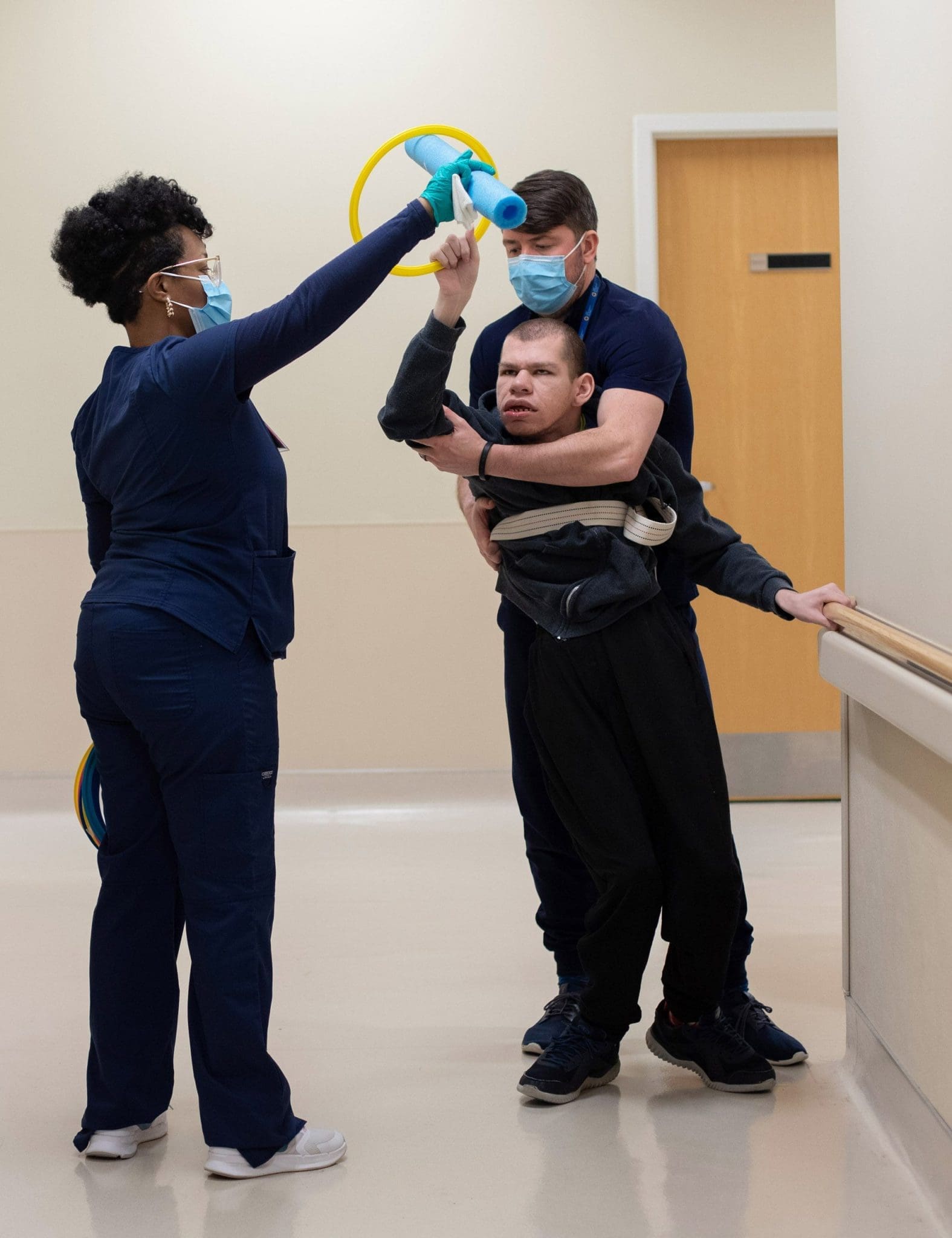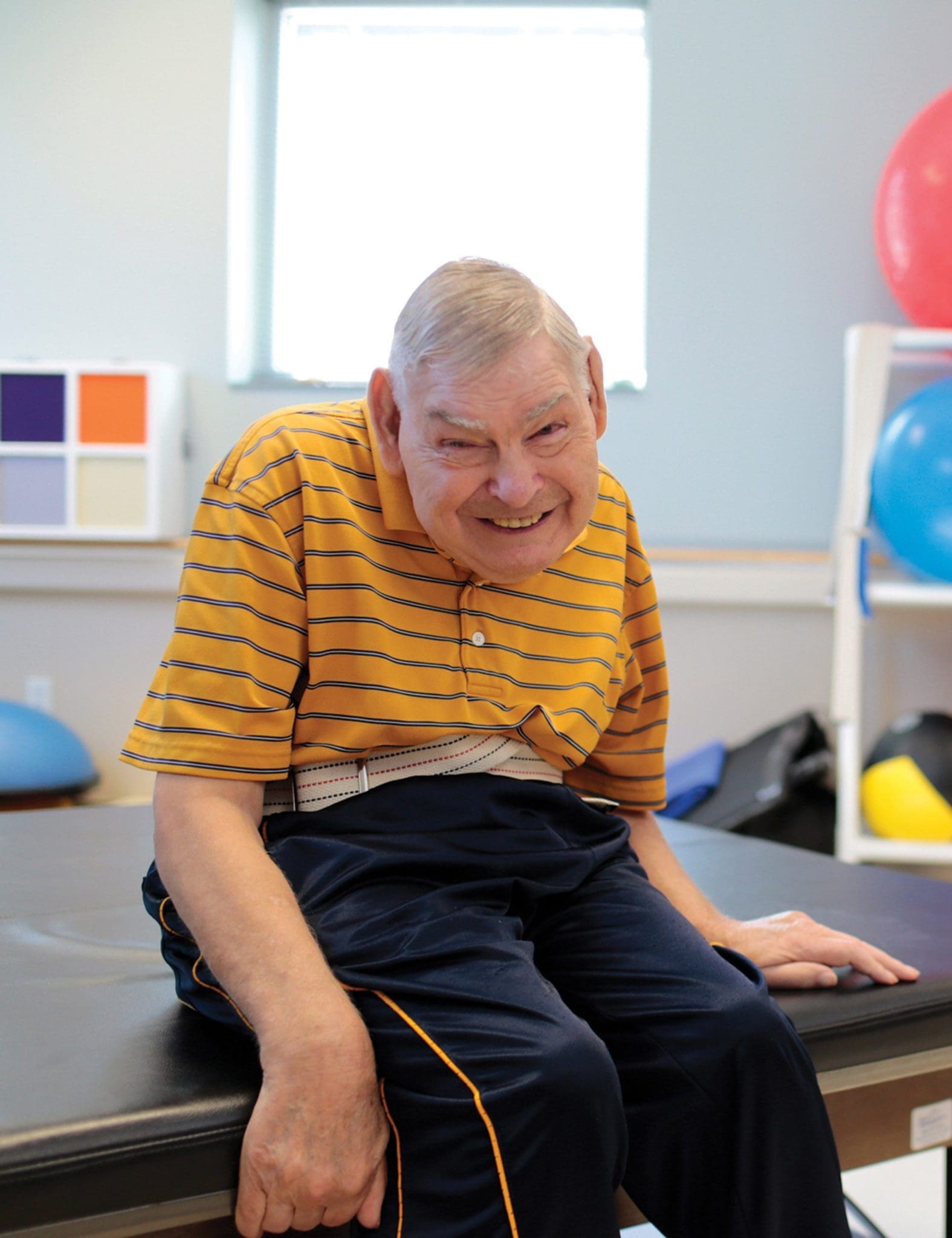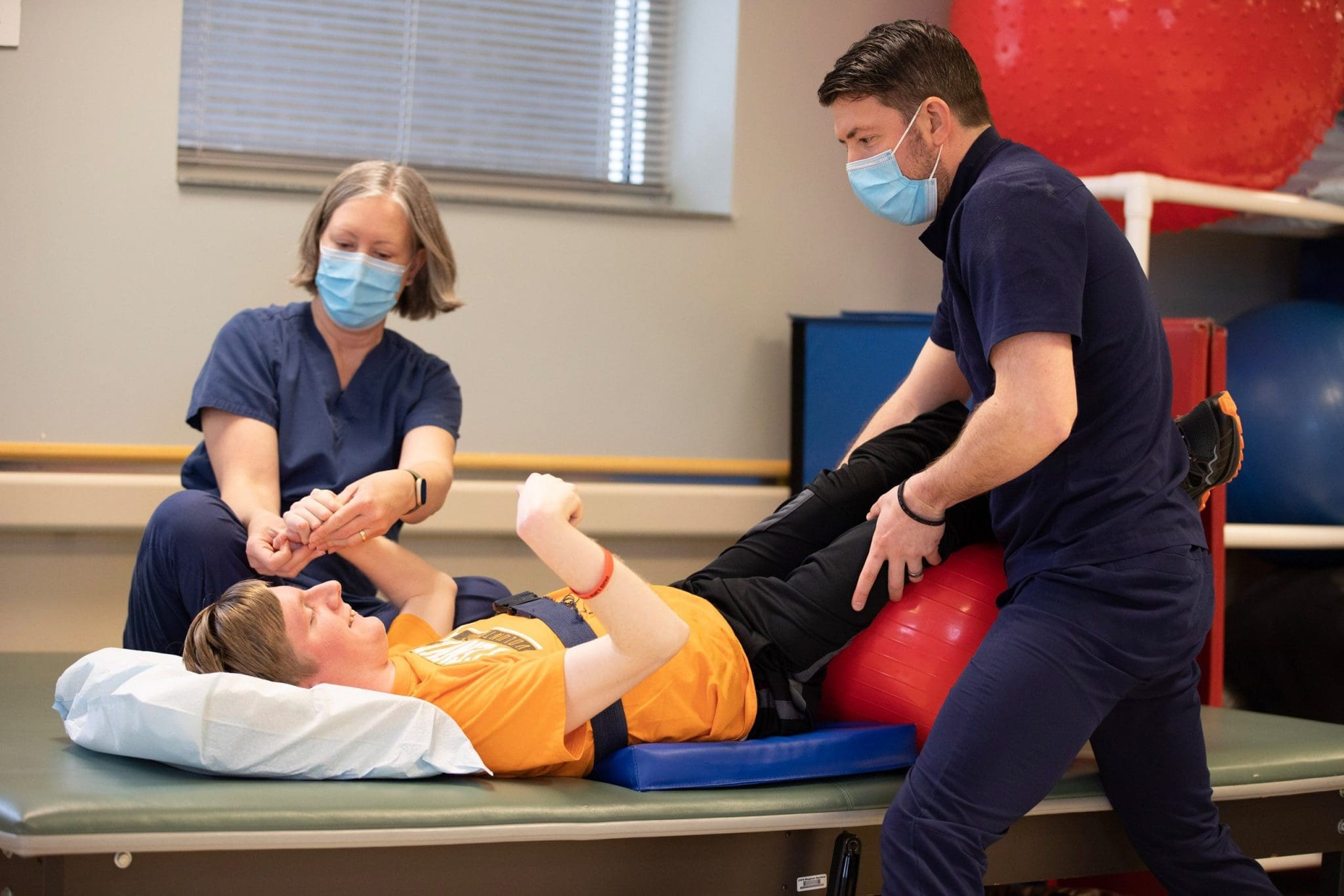© 2025 Kramer Davis Health. All Rights Reserved.
PHYSICAL THERAPY (PT)
Movement is life, so we empower people to move!
Movement impairments are an issue that we all face at some point in our life. These impairments may be further amplified in the presence of an intellectual disability. Physical Therapy addresses movement deficits to improve the quality of life in all aspects of health.





Our clinic is truly special because of our interdisciplinary setup. We collaborate daily with providers in other fields who know the patient personally.
The unexpected essential of health care
Physical Therapy may be the ‘jack of all trades’ of health care. We are found in hospitals and outpatient clinics. Therapists can work with a wide range of needs. For example, they may perform techniques that assist with mobility. They can treat vertigo and use other modalities to treat pain. When you need to be fitted for a wheelchair or adaptive device, you call on a Physical Therapist. They can care for patients as young as infants,to older adults, those with special needs, and include everyone in between. Physical therapy is like the essential maintenance that keeps a vehicle running smoothly. Every person’s body benefits from physical therapy and safe forms of aerobic exercise, but especially those facing additional physical & mental challenges.
Collaborating with clinicians of all disciplines
The physical therapy team communicates regularly with multiple disciplines both within our clinic and outside of it, such as primary care providers, occupational therapy, speech therapy, neurologists, psychologists/psychiatrists, orthopedic surgeons, behavioral health, and more. We also work with day programs and adaptive equipment vendors such as wheel chair fitting companies, orthotists, medical supply companies, Hoyer lift vendors, stander vendors, etc. for the best outcome for our patients. We are attentive to our patients’ needs, and seek to make the additional connection necessary for them to receive the care and support they deserve. These connections made by all disciplines working together allow us to provide the highest quality care.
Advocating for our patients
Our therapists and clinicians are not just healthcare providers, we are advocates for our patients. There isn’t only one particular story or just one patient who has made an impact on our lives – it’s every patient, every small success, every caregiver going above and beyond…it’s every story. We are better every day because of our amazing patients.
What would make life easier or more meaningful for the patient?
The best way to prepare for an initial PT evaluation is to think about your priorities and desired outcomes. The patient and their family should reflect on what their goals are for therapy, and what they hope to achieve. You can’t know where to go, if you don’t have an idea of where you want to be.
Helping both the patient and caregivers to feel comfortable
Upon entering the clinic, patients, and caregivers are welcomed in a calm, clean environment. Our therapists introduce themselves and engage with both the patient & caregiver. Throughout each appointment, clinicians and staff ensure that we communicate each step in a way that our patients can understand (verbal, visual, pictures, communication devices, etc). In most cases, a lot of information is gathered from the caregiver.
Assessing functions and deficits helps us create a plan
We perform a thorough PT evaluation during our initial connection. You can expect an explicit plan outlined by the attending Physical Therapist to help you meet your movement goals. Formal and/or informal testing methods may be utilized in order to assess the patient’s current level of movement.
Empowering you to be an active partner in the therapeutic process
We want every patient to feel respected, accomplished, and valued as they walk out our doors. We want every caregiver to feel supported and heard. The intention of therapy is to find the tools to help increase the patient’s quality of life and independence. We empower you to be an active partner in the therapeutic process and take the methods used in therapy and carry them over into the home. We hope you feel hopeful for the future, as you see that you have a whole team working together to coordinate the best possible care and outcome. You came to the right place.
Kramer Davis Virtual Tour
4:54 duration
Frequently Asked Questions
Our team answers some of our most frequently asked questions in the area of physical therapy for those with IDD.

What’s the problem? What do you do to treat the problem? How long will it take for me to get well?
Our most frequently asked questions have different answer depending on the person asking. There are no simple answers. Our purpose is to look and listen in order to discover the unique problems for each individual. We are attentive to the details and work to provide you answers with our assessments.
What do PTs do with patients?
It depends on the individual’s abilities and deficits, the setting, and the patient’s/caregiver’s goals. PT can look like exercise. Physical therapists can help injured or ill people improve movement and manage pain. They are often an important part of preventive care, rehabilitation, and treatment for patients with chronic conditions, illnesses, or injuries.
What happens if I miss appointments?
One of the purposes of consistent appointments is to continue upward progress in mobility. Skipped appointments, or ‘taking a break’ from PT can result in stalling of progress or even of regression in physical capabilities. Keeping your appointments allows for you to continue meeting goals and improving.
How do I prepare for our appointment?
The best way to prepare for an initial PT assessment is to think about your priorities and desired outcomes. What activities are difficult for you? What would make day-to-day life easier or more meaningful for the patient? What does/did the patient enjoy participating in? Are there any environmental barriers to patients’ participation in daily routines, such as bathing, eating, and dressing? If the way the home is set up is a barrier, having pictures of the specific setup could be helpful for the therapist to determine whether adaptive equipment might be appropriate.
Please Note: Services may vary for each Kramer Davis clinic location.